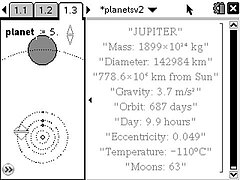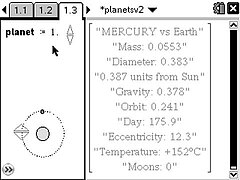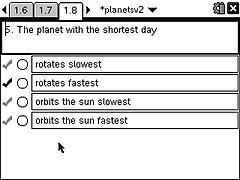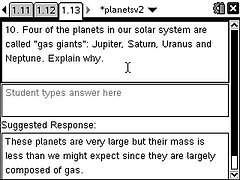Resource Portal
Here you can find STEM education resources.
Search and filter below, according to your preferences, to find free activities, videos or webinars to use.

Exploring our Solar System

Detailed data for the properties of the planets with 10 pages of questions.
Publisher: Texas Instruments UK
Editor: Barrie Galpin
Author: Bikash Jain, Stephen Arnold
Topic: STEM
Tags Data , STEM , Physics , Sustainability
You can choose metric or imperial units and see the following data for each planet: mass, diameter, distance from the sun, gravity, duration of orbit, length of "day", eccentricity of orbit, mean temperature, number of moons.
You can also compare these properties directly with the earth's. For example, Mercury's mass is only 5% that of the earth but its "days" are 176 times longer!
Using TI-Nspire's Q+A feature a series of interesting questions are included to guide students' investigation of the data. These questions are:
- Is is always, sometimes or never true that the larger the planet the greater the gravity? What exceptions are there?
- Which planets have the longest and shortest day-length?
- What name is given to the time the earth takes to orbit the sun?
- The time taken to orbit the sun generally increases as distance from the sun increases. Which planet is an exception?
- On which planets are living conditions most like those of the earth?
- Which have the most elliptical orbits?
- Why might four of the planets be called "gas giants"?




